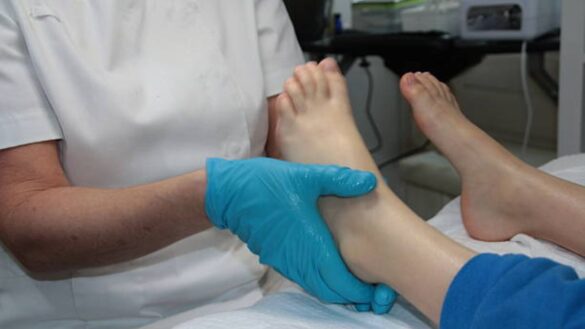Strong, flexible feet are the foundation of good movement, but they don’t always get the attention they deserve. Many people don’t realize how much foot and ankle strength affects balance, endurance, and overall stability. A foot and ankle specialist near me often suggests targeted exercises that keep the feet resilient, reduce discomfort, and lower the risk of injury.
Toe Grip Exercises That Improve Balance and Prevent Falls
Weak toes can make it harder to maintain stability, especially on uneven surfaces. Strengthening the small muscles in the feet improves balance and helps prevent falls. A foot and ankle specialist often recommends toe grip exercises because they activate the intrinsic foot muscles that are responsible for gripping and support.
One simple yet effective exercise involves placing a small towel or marble on the floor and using the toes to pick it up. This motion strengthens the muscles that help stabilize the foot while walking or standing. Another variation is pressing the toes into the ground while seated to improve endurance in the arch and forefoot. Over time, these exercises improve coordination, making movements more controlled and reducing the likelihood of missteps.
Heel Raises That Build Strength and Stability in the Ankles
Ankle weakness can lead to instability, increasing the risk of sprains and chronic pain. Heel raises are a key exercise recommended by foot and ankle specialists to build strength in the lower legs and improve overall foot support. This movement targets the calf muscles, Achilles tendon, and the stabilizing muscles around the ankle joint.
Performing heel raises on a flat surface helps strengthen the entire foot and ankle structure, while using an elevated surface, such as a step, deepens the range of motion. Controlled, slow repetitions improve muscle activation, ensuring better ankle stability. As strength improves, single-leg variations add an extra challenge, further enhancing balance and resilience.
Arch Strengthening Movements That Reduce Foot Fatigue
The arches of the feet play a crucial role in shock absorption and weight distribution. Weak arches often contribute to discomfort, fatigue, and even conditions like plantar fasciitis. Strengthening these muscles helps relieve stress on the foot and improves endurance for prolonged standing or walking.
A common exercise involves pressing the toes into the ground while lifting the arch, a movement known as the short-foot exercise. This engages the deeper stabilizing muscles of the foot, reinforcing the natural arch shape. Another effective movement is seated arch lifts, where the toes remain on the ground while the middle of the foot lifts and lowers in a controlled motion. Practicing these exercises regularly helps maintain proper foot mechanics, reducing strain and discomfort.
Resistance Band Workouts That Enhance Flexibility and Control
Limited flexibility in the feet and ankles can restrict movement and make daily activities more challenging. Resistance band exercises provide a simple yet effective way to improve flexibility and strengthen foot control. These exercises target the small stabilizing muscles while increasing mobility.
One of the most effective resistance band exercises is dorsiflexion, where the band is looped around the foot and pulled toward the body while resisting with the ankle. This strengthens the muscles responsible for lifting the foot, which is essential for walking and preventing trips or falls. Another useful exercise involves lateral foot movements against the resistance band to improve side-to-side control. These workouts help maintain healthy foot mechanics and prevent stiffness.
Towel Scrunch Drills That Boost Toe Dexterity and Foot Support
Foot coordination and toe strength play an important role in overall stability, but they’re often overlooked. Towel scrunch drills challenge the foot muscles in a way that improves grip, dexterity, and endurance. A foot and ankle specialist near me might recommend this exercise for individuals experiencing foot fatigue or weakness.
This drill involves placing a towel flat on the floor and using the toes to scrunch it toward the body. The motion forces the muscles in the arch and toes to contract and engage, leading to stronger foot support. To add difficulty, placing a small weight on the towel increases resistance, making the exercise even more effective. Regular practice enhances fine motor control in the toes, contributing to better overall foot function.
Ankle Circles That Promote Better Mobility and Injury Prevention
Stiff ankles can lead to reduced movement efficiency and increase the risk of sprains. Ankle circles are a simple but essential exercise that keeps the joints mobile and flexible. This movement is often recommended by foot and ankle specialists to maintain healthy range of motion and prevent injuries.
Performing slow, controlled ankle circles in both directions improves joint lubrication and enhances movement precision. This exercise is particularly beneficial for individuals recovering from an injury or those who experience stiffness after long periods of inactivity. Incorporating ankle circles into a daily routine ensures that the ankles remain strong, flexible, and capable of supporting the body’s movements with ease.

